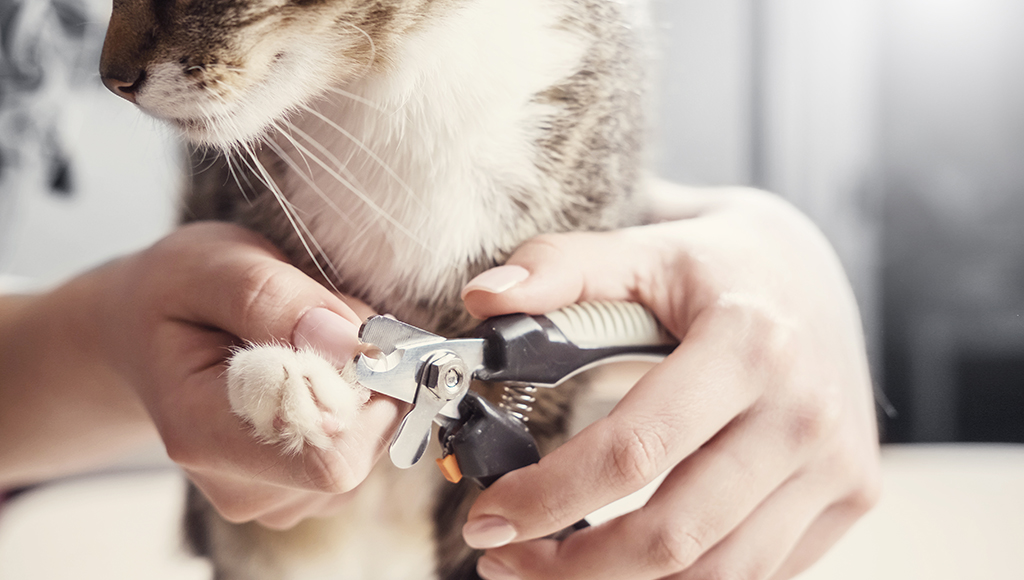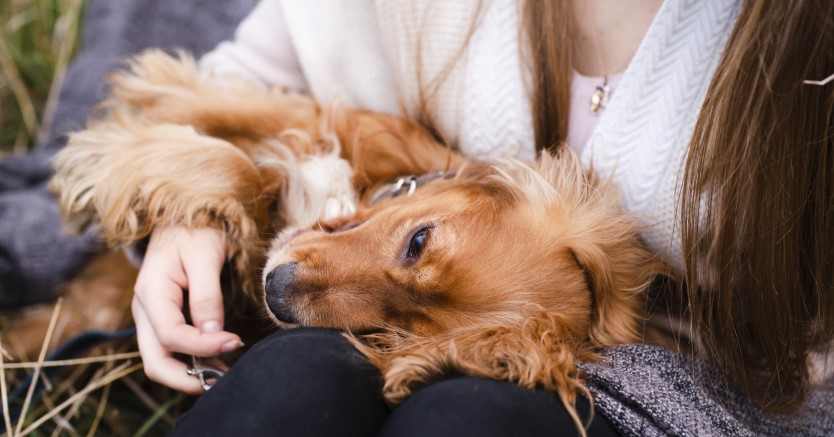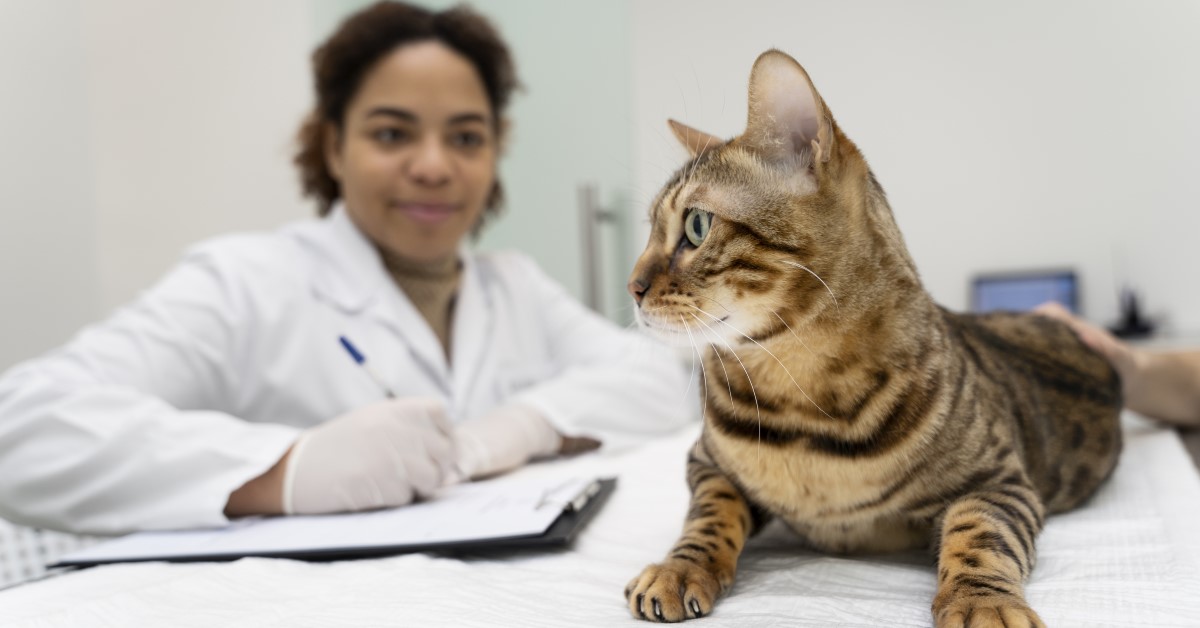Pet Health: Proper Nail Grooming Basics
Good pet grooming includes the nails or claws. We've got some useful tips to help make that easier.

A good pet grooming schedule includes more than just bathing or brushing your pet. Clipping the nail/claws is not only necessary to protect both the owner and pet from unnecessary scratches, but also to keep your pet healthy.
It is best to start holding and touching your pets paws when they are very young so they adjust to having their paws handled. This will help them become accustomed to having their nails clipped, as they will not be frightened or feel confined when you need to hold them to groom their paws. Some pets, however, just won't adjust to someone holding their paws, no matter how early you begin conditioning for this important grooming step. Remember to be patient and don't get discouraged. In such cases, try clipping only one nail at a time until you have clipped all of them. In difficult situations consider having a groomer or veterinarian do the trimming.
How often should I clip my pet's nails?
Indoor pets may need more frequent attention. Animals claws wear down naturally through normal activity, but cats and dogs; especially when kept indoors, often need them trimmed more often as they are not as active and generally walk on softer surfaces than their outdoor counterparts. Cats in particular may try to remedy this problem by sharpening their claws on the curtains, couch or carpet. When a dog's claws are too long you may hear them click as they walk across a hard surfaced floor; this is a sign the claws are too long and need to be clipped. Long claws are also more prone to infection. Overgrown claws can be the source of painful paw injuries for both cats and dogs. A claw can snag something or even crack in some cases, resulting in a very painful wound.
Dogs need their nails clipped and filed on a regular basis, usually every 3 to 4 weeks. It is not uncommon for dog owners to wait too long between nail clipping. Overdue nails can raise health issues. Extended growth can result in painful ingrown nails. Elongated nails affect the comfort and health of dogs. Some dogs will find it difficult to place their full body weight on their feet with discomfort from elongated nails. As a result these dogs develop sore feet, legs and hips and overall discomfort, and the simple act of just walking can be a painful experience for them.
Dew claws
About 1" to 3" above the inside of their front feet (and sometimes rear fee) dogs may have "5th nails" commonly referred to “dew claws.” Nail clipping should include these nails. Since dew claws are never exposed to friction from touching ground surfaces, they are often longer and sometimes overgrown. In fact, you may find neglected dew claws grown into a full circle circle and even painfully ingrown requiring veterinary care. It is not uncommon for pets to have dew claws on some feet, and not on others.
The quick
There is a blood vessel in dog and cat nails commonly referred to as "the quick." The quick is usually visible to the eye except for dark-colored nails. Because it is possible to cut the quick and cause a nail to bleed, many pet owners are fearful of cutting their pet's nails. Instead, they bring their dogs to groomers or veterinarians for clipping.
If the quick is already very near the nail tips, daily filing for approximately three weeks may encourage nail quicks to recede enough for a comfortable, nail clipping of a very small amount of the tips of the nails without bleeding. Continuing to file the pet's nail several times a week, will allow you to be able to clip the nails a little shorter each time until the quick has properly receded and avoid discomfort caused by overly long nails. Thereafter, the nails should be clipped and filed on a regular basis in order to maintain their healthy state, and prevent the pet from having to suffer bleeding nails. If clipping the nails is too difficult for you, or you are too scared you'll cut to far, there is almost no risk of causing the nails to bleed when filing them. Although filing the nails takes longer and must be done more frequently, it is a good alternative to clipping.
How do I cut my pet's nails?
Clipping your pets' nails can be tricky if your dog has ingrown toenails. Many dogs that require little professional grooming and styling still visit groomers for a nail clipping, or a bath which includes nail clipping. Generally, dog owners do not like to cut nails, and many of these pets don't really care for nail clipping either. Learning how to hold and handle the dog, and properly use the correct tools, makes nail clipping and filing a much more bearable procedure for dogs. Most nail clipping procedures cause no pain to the dogs.
Nail clipping is essentially the process of cutting away excess nail, and the key is to learn just what is the "excess nail." If you can hear your dog's nails when he walks on a hard floor surface, there is probably a sufficient amount of excess nail to clip and/or file down. It is better to cut a small amount regularly than a large amount at once. However, since dogs may go many weeks between professional grooming appointments it is usually the task of owners to reasonably clip more excess nail.
Clipping dog nails:
- Place your left arm around the dog's middle body and hold it against your chest. Talk softly and kindly to ease the dog's anxiety about the clipping procedure.
- In your left hand hold the dog's foot with your thumb on top of the toe, and two or more fingers below along the pad of the foot.
- Insert the nail into the clipper, and clip below the quick at a 45 degree angle. Be sure to also clip dew claws. On dog's with black nails you may want to make several small clips instead of clipping "a chunk off." You will usually be able to spot the quick as a dark spot in the center of the nail when looking at it head on. This is the quick you want to avoid cutting.
- If you cut the quick you must stop the bleeding. In most cases, a coagulant product (nail styptic powder) is sufficient. Apply the powder to the tip of the quick where it was cut, and hold with moderate pressure. The bleeding often stops very quickly. Wipe away excess powder and re-check the "seal" often. Remember, it is possible that the powder seal may be washed or scratched off until the "seal" has had adequate time to dry. If you leave too much excess powder it hardens into a "cap" on the nail tip that can be broken off and entirely remove the seal. Therefore, be sure to remove excess powder only.
- File each nail so that the tip is soft and without rough broken edges. However, remember that filing nails that bled may remove the coagulant styptic powder "seal" and resume bleeding, so file lightly and carefully. Do not file the seal away. Brittle nails will require more filing to remove burrs.
If a dew claw has grown into a circular loop, you can cut into the mid-section of the nail with scissor-type cutters before the quick. Afterwards, use the regular nail clippers to finish cutting but again avoiding the quick.
Clipping cat nails:
When trimming cat claws, squeeze the paw lightly to expose the claw and carefully clip off only the very point of the nail. This is different than a dog's claw, where the trimming point is where the nail starts to curve down. Trimming too little is much better than trimming too much.
Ready to start saving money on pet wellness care?
Then take a look at Mint Wellness, the pet wellness plan that provides fast reimbursement on routine pet care. Save on vaccinations, wellness exams, preventatives, dental, and more!
Learn More


